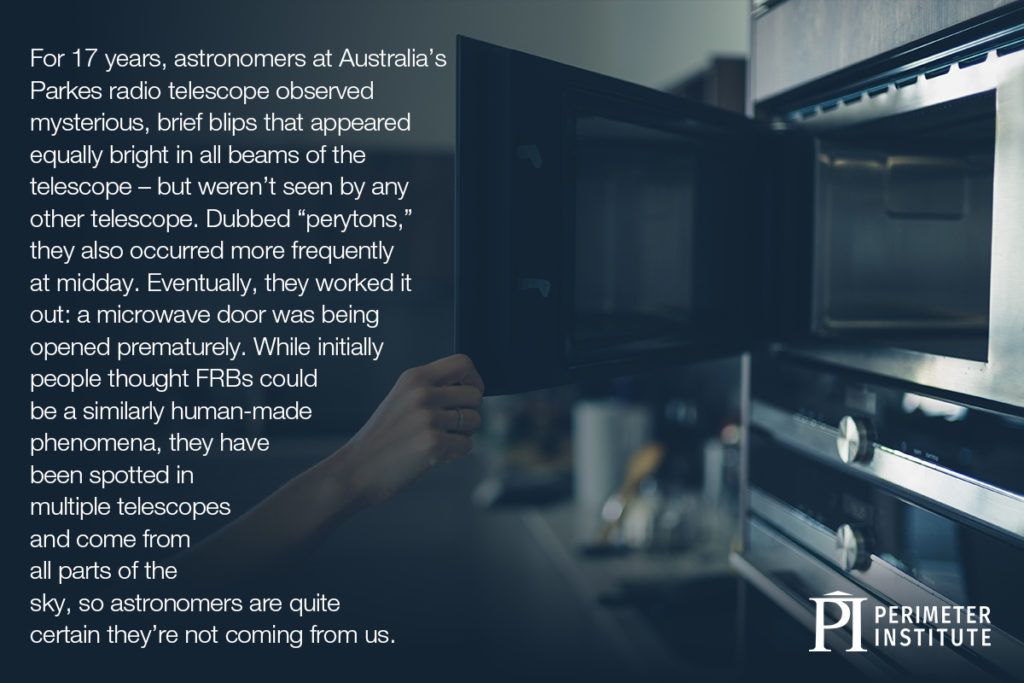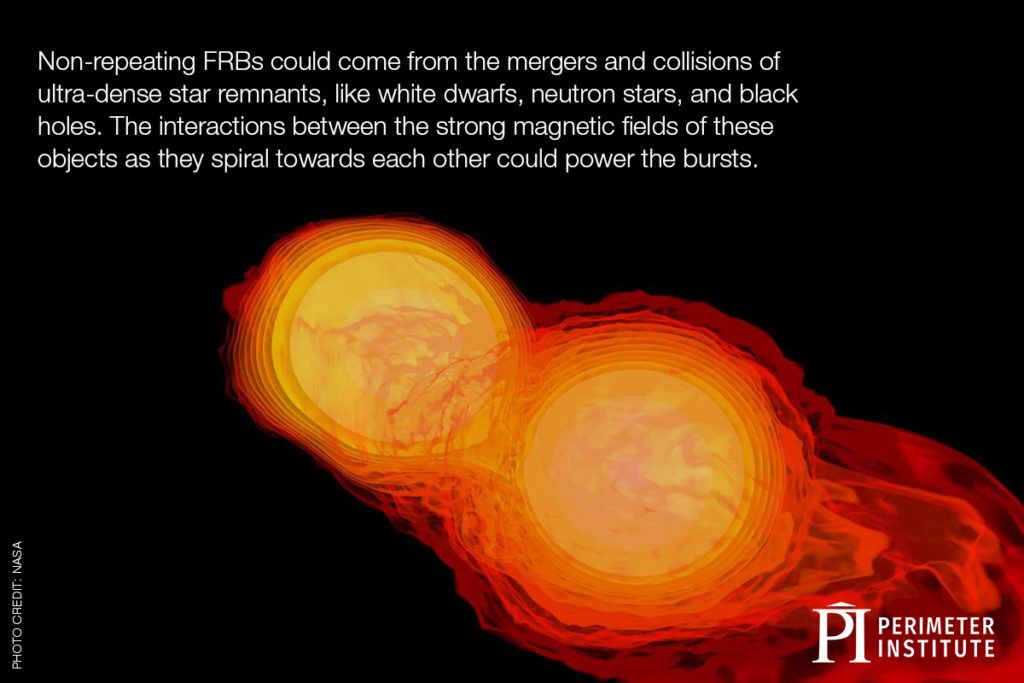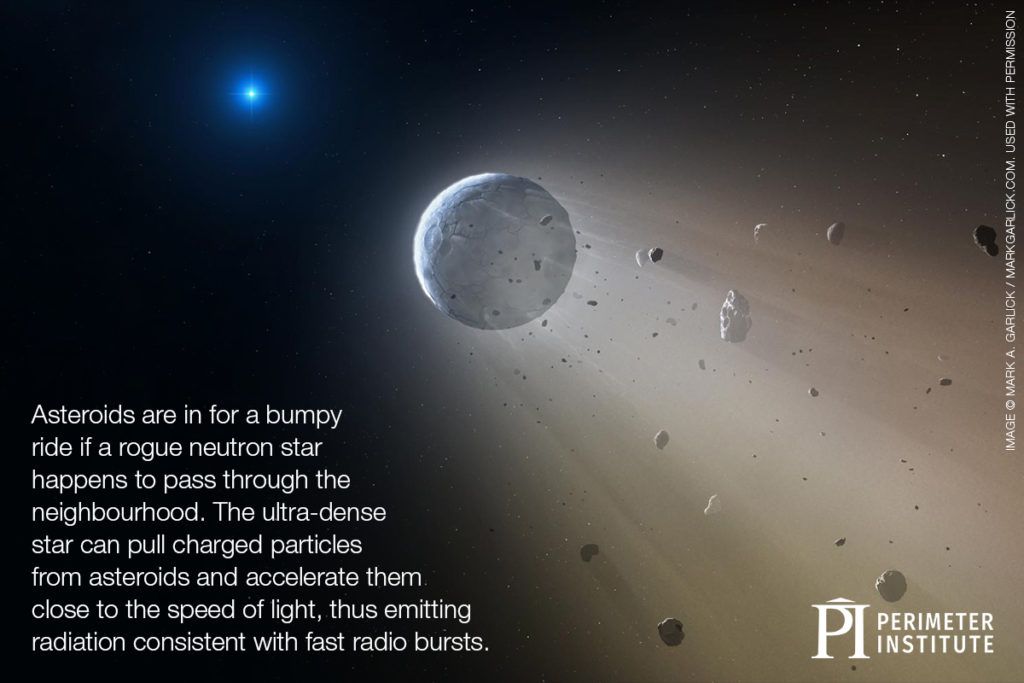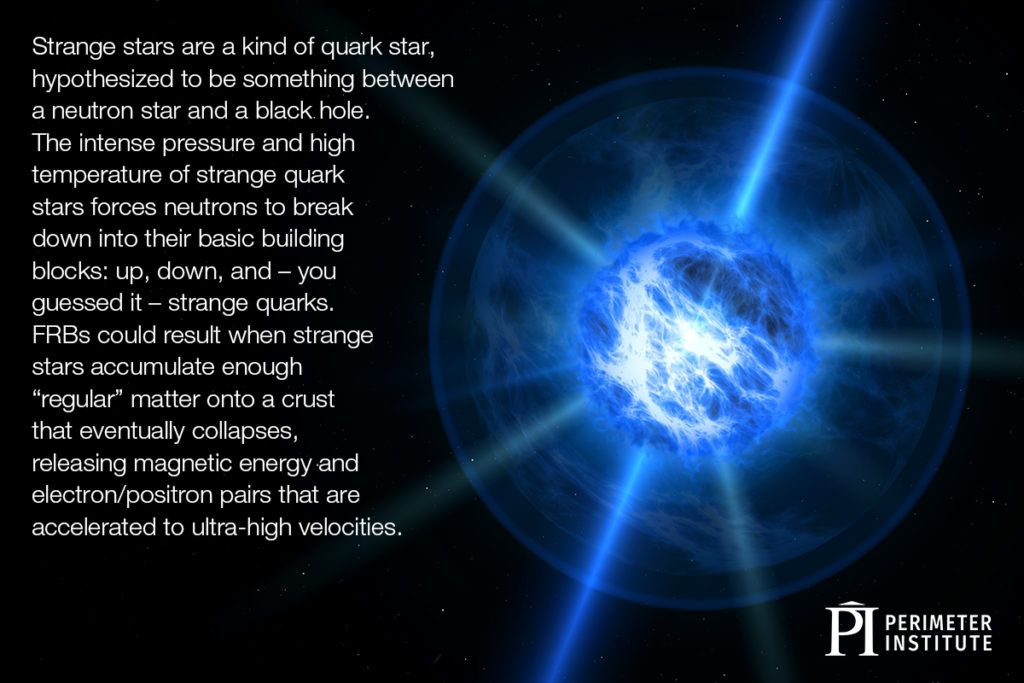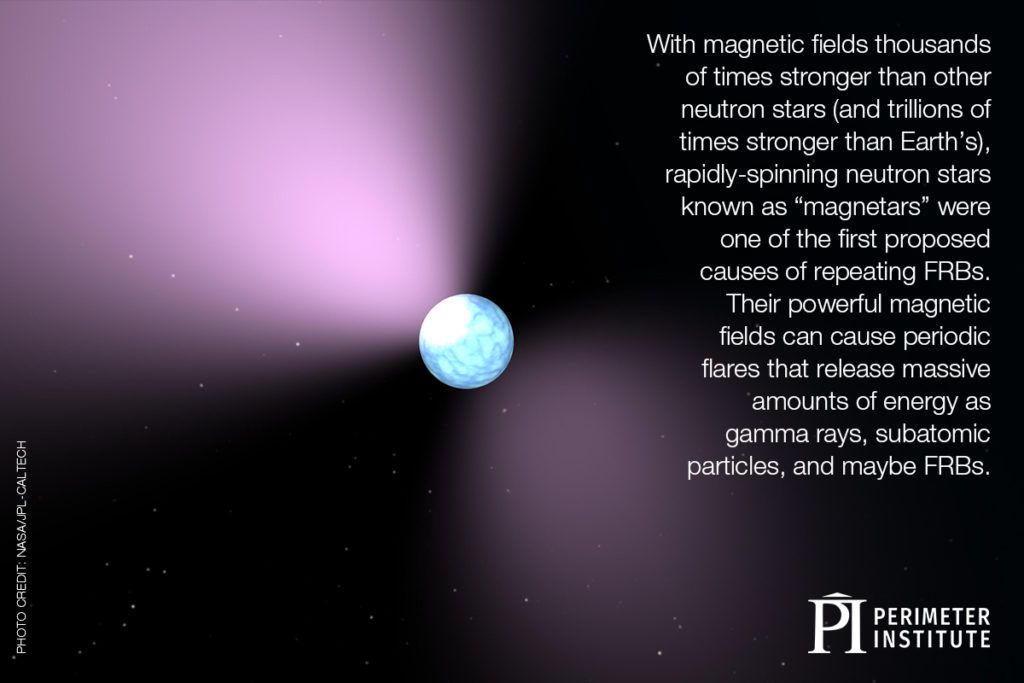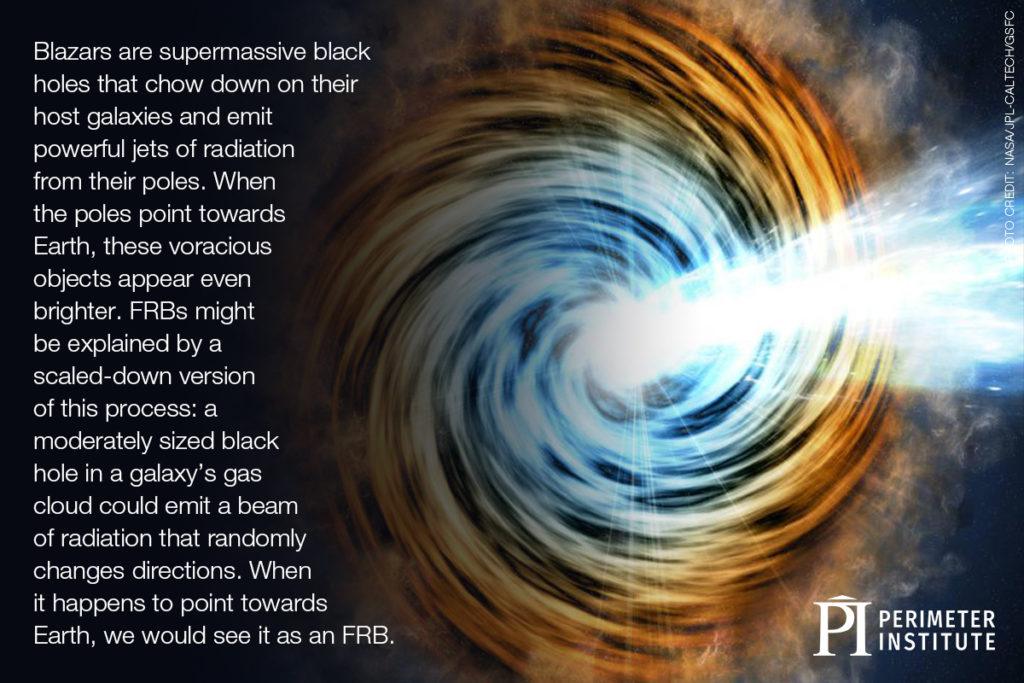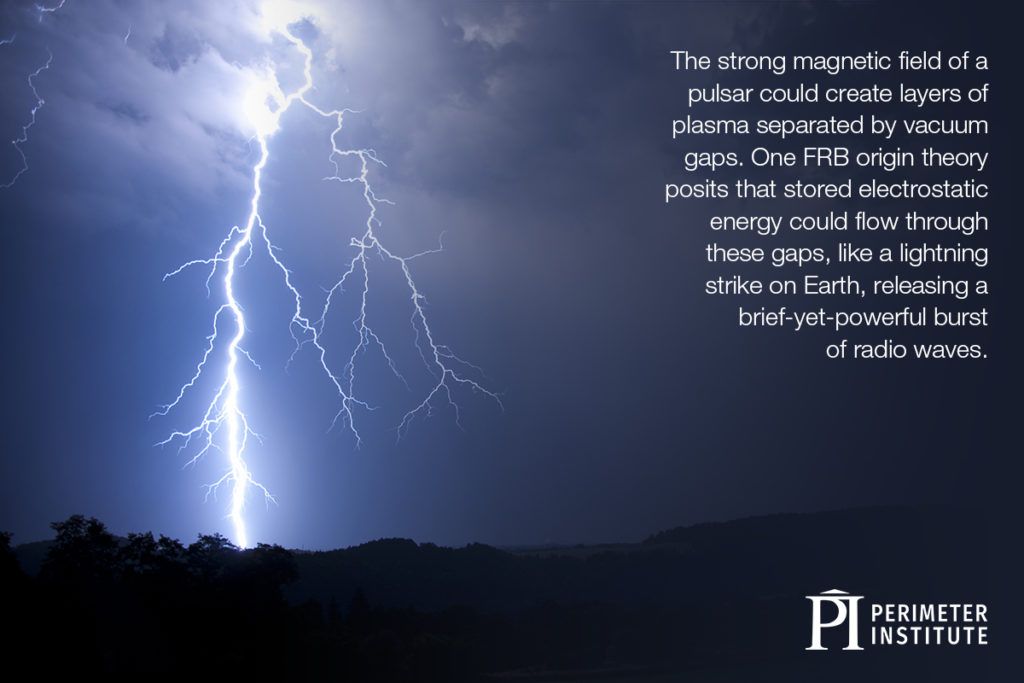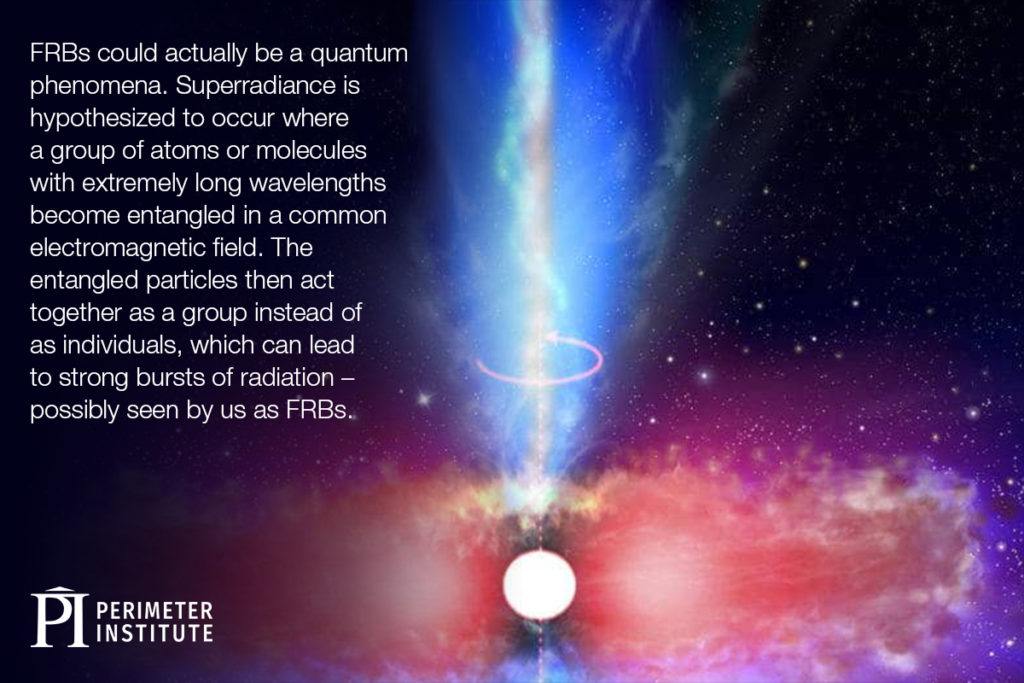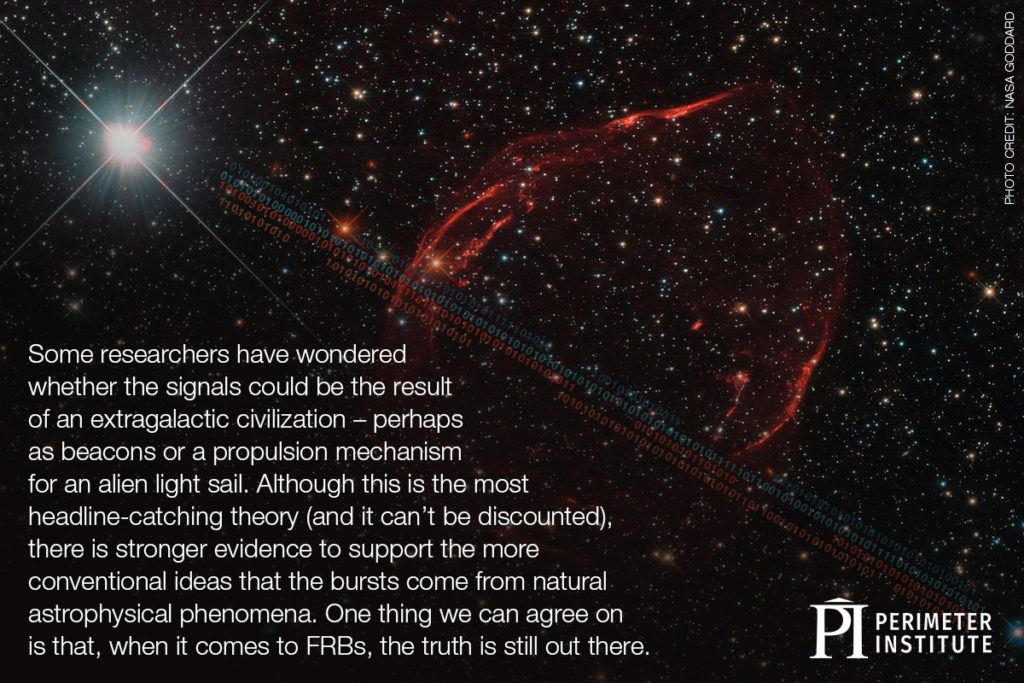Since they were first detected in 2007, astronomers have been puzzling over the cause of powerful intergalactic pyrotechnics, known as “fast radio bursts” (FRBs). This bafflement stemmed, in part, from a lack of sources to study: between 2007 and 2018, only a couple of dozen FRBs were observed.
Most seemed to be one-off explosions, leading researchers to believe they were caused by cataclysmic events like the death of a star or the merger of two black holes. One burst, however, repeated. That suggested at least some FRBs are formed by a less destructive mechanism.
But what are they? That question remains unsolved, but perhaps not for much longer. In early 2019, the Canadian Hydrogen Intensity Mapping Experiment (CHIME) – a radio telescope in British Columbia – announced the unprecedented detection of 13 new flashes, including another repeater.
Still, theories abound as to what causes FRBs. Here are 10 theories – some plausible, some wild – about the origins of these cosmic light shows.
1. Us?
2. Merger of two compact objects
3. Collisions between neutron stars and asteroids
4. Strange star crust collapse
5. Magnetar giant flares
6. Mini blazars
7. Pulsar starquakes
8. Pulsar lightning
9. Superradiance
10. Aliens
About PI
Perimeter Institute is the world’s largest research hub devoted to theoretical physics. The independent Institute was founded in 1999 to foster breakthroughs in the fundamental understanding of our universe, from the smallest particles to the entire cosmos. Research at Perimeter is motivated by the understanding that fundamental science advances human knowledge and catalyzes innovation, and that today’s theoretical physics is tomorrow’s technology. Located in the Region of Waterloo, the not-for-profit Institute is a unique public-private endeavour, including the Governments of Ontario and Canada, that enables cutting-edge research, trains the next generation of scientific pioneers, and shares the power of physics through award-winning educational outreach and public engagement.
You might be interested in



